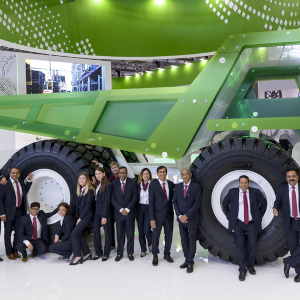In today's article, we give you our lowdown of seven vehicles that changed the world. Some paved the way for further ground-breaking innovation, without which, we simply could not picture life as we know it. Read on to discover more!
What is the future of organic farming? What innovations are creating an exciting, more sustainable future? The agricultural and horticulture sector is making strides to feed the ever-growing population and be more environmentally friendly.
Organic farming is a practice which aims to use ecological pest controls and biological fertilizers derived from plant and animal waste - in addition to sustainable operations such as cover crops and crop rotation.
The idea is not to use chemicals that could harm the environment, species and their habitats, despite how much more efficient they may be. Organic farming specifically does not use antibiotics (unless prescribed by a qualified veterinarian to fight infection and improve animal wellbeing). Growth hormones will not be used, and livestock will not be fed animal byproducts, to be more ethical and raise animal welfare standards.
Each of these steps inevitably get us closer to that 2050 Net-Zero target, whilst meeting the needs of the increasingly mindful generations. Today’s article will go through the benefits and challenges currently facing the world of organic farming. So, let’s get started!
The Benefits of Organic Farming
A key benefit of organic farming is how much healthier it is for the environment; methods such as cover crops and crop rotation, for example, are far more sustainable than their alternatives. Cover crops are where crops are planted at the end of the harvest, so instead of an empty, unused field, the plants provide nutritious soil, creating a healthy, harmonious balance for the wildlife and ecosystem surrounding it.
Crop rotation aims to balance the nitrogen levels from the previous harvest. For example, corn absorbs a lot of nitrogen from the soil. To balance the equation, planting beans would put nitrogen back into the earth.
Soil health is critical for the longevity of agriculture. Some experts argue that current intensive farming methods leave a finite amount of harvests left. How will people be fed if we cannot provide the population with food? Back to the basics, where they have to learn to grow food in their back garden, perhaps? And, of course, that is not feasible for urban dwellers living in apartments.
Using natural pesticides and fertilizers means harsh chemicals do not damage the earth. Examples of said pesticides could include "pyrethrum (pyrethrins), rotenone or ryania (botanical insecticides), or minerals, such as boric acid, cryolite, or diatomaceous earth." Even organic pesticides still need to be met with caution, however. Natural does not always mean safe, and can still harm if misused.
Accessibility is important, and organic methods are greatly accessible to smaller farms and less affluent countries. While they do not always have the funds for chemical pesticides and intensive farming practices, they have a lot of usable land fused with a progressive culture - therefore it is unsurprising that they are paving the way to a more sustainable future.
Did you know that India is the world leader in organic farming and ranks number one according to WorldAtlas?
The Challenges of Organic Farming
Organic farming is not without its limitations. The biggest recognised challenge is its low productivity and yield, whilst requiring more land than conventional farming. Farmers in more developed nations can be put off due to the demands to feed the rising population, whilst urban areas simultaneously increase in size, creating less space for agricultural land.
What’s more, bio fertilizers have been known to host pathogens that can be spread to humans. This means that organic farming is heavily regulated, and there is a limited window in which biopesticides can be used. Also, there are added costs due to organic methods being labor-intensive, which causes products to be more expensive for consumers. As we advance, we need more efficient operations and planning within the infrastructure to meet the growing demands and Net-Zero goals.
What Does the Future Look Like?
An organic future could be a highly effective solution to feed the increasing world population and a way to achieve more robust food security.
Sustainable organic food production methods are reported to produce nutritious foods, preserve biodiversity, and mitigate climate change. With further developing technological advancements, they could provide:
-
Long-term solutions for global issues like hunger.
-
Increase yield, solving the limiting factor.
-
Minimizing land degradation and soil erosion.
-
And further improving animal welfare whilst reducing pollution.
Organic farming requires specific treatments to avoid the attack of certain diseases and pests that might affect crop yields. This is usually achieved through well-trained pest controllers, which may cost more than non-organic methods.
Moreover, innovative minds are banding together to address some of the aforementioned challenges. For example, the development of smart farming can assist organic practices across the entire supply chain. Smart farming provides:
-
IoT (internet of Things) - The Internet of Things allows scissor-sharp accuracy in observation and diagnostics. Using sensors, AI, and smart technology, farmers can make quicker decisions based on insights, spot early signs of disease, increase yields, and so much more. We have written a blog on IoT, which you can find here.
-
Precision farming - The incredible accuracy provided by the Internet of Things means that animals and crops can be better looked after by getting the treatment they need. You can apply specific treatment to land per meter, crop or animal rather than implement it throughout the entire field. This saves the overuse of resources and stops unnecessary applications.
-
Smart greenhouses - These allow for the perfect controlled environment conditions, which could help increase yield - specifically designed to encourage specific crops to flourish.
-
Drones - These help to combat the labor-intensive aspect of organic farming, allowing for more efficient automated equipment that can span more extensive land areas in less time.
-
Indoor or vertical farms - Both of these innovative farms tackle the space issue whilst adopting the above practices. Vertical farms can be located in urban areas, which cannot usually be used for organic farming. Like smart greenhouses, vertical farms can create a crop's perfect environment. The controlled environment eliminates the need for bio and chemical pesticides.
Organic farming is projected to grow from $ 52.4 Mn billion in 2022 to $ 94.5 Mn billion by 2030 and become more sustainable. Funding and implementation of new legislation will further incentivise farmers to get on board and create a more organic future. As of May 2022, the UK has implemented a new Farming Investment Fund, providing grants of £25,000 and £300,000 for up to 40% of eligible project costs. The Countryside Stewardship scheme is another example of funding that helps incentivise organic farming. Evidently, more and more countries are getting behind the idea of an organic agricultural future!
The future of organic farming seems promising, most likely lowering yields through production in the short term but with an overall hope of maintaining or increasing yields in the long term, and feeding the world's rising population. The pros seem to outweigh the negatives, in creating a more secure, safe and sustainable supply chain and can only improve with time and increased innovation.
To keep up to date with all the exciting developments within the agriculture sector, follow our Facebook page here.






